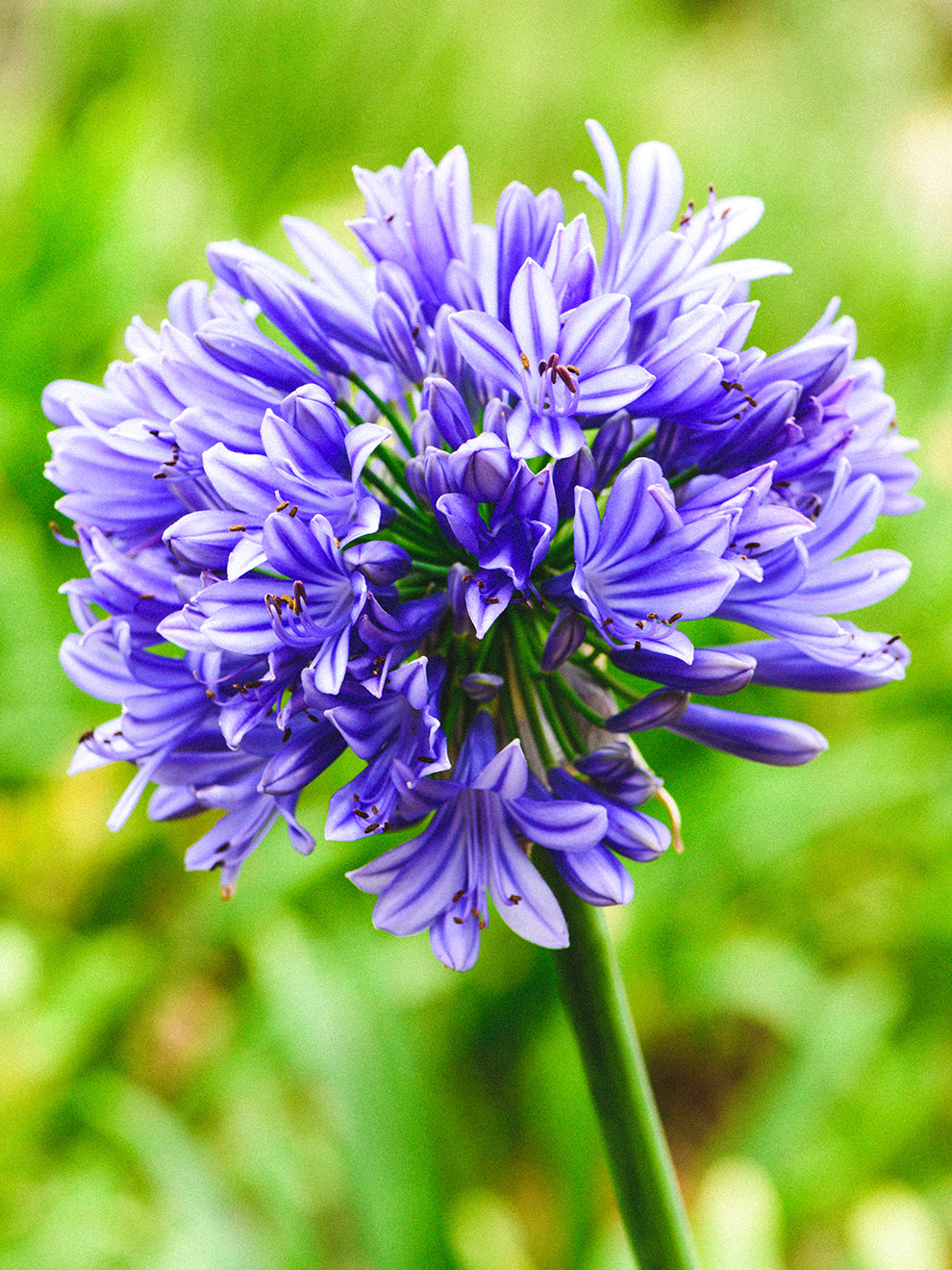Agapanthus Friend Plant Kingdoms: Perfect Pairings for Your Garden
Agapanthus Friend Plant Kingdoms: Perfect Pairings for Your Garden
Blog Article
Releasing the Secret to Successful Agapanthus Cultivation: Advice for a Flourishing Yard
In the realm of horticulture, growing agapanthus effectively requires a calculated approach that incorporates different facets of plant treatment. By comprehending the subtleties of agapanthus cultivation, one can produce an environment where these plants grow and bloom perfectly.
Planting Agapanthus: Best Practices
When growing Agapanthus, proper dirt preparation is essential for making certain successful development and development of these lovely flowers. Agapanthus, frequently known as Lily of the Nile or African lily, prospers in well-draining dirt with a slightly acidic to neutral pH level - Agapanthus. Prior to growing, it is essential to change hefty clay soils with organic matter such as garden compost or peat moss to boost drainage and supply crucial nutrients for the plants
To plant Agapanthus, pick a location that obtains complete sunshine to partial color, as this will promote healthy growth and bountiful blooming. Dig a hole twice the diameter of the plant's root sphere and position the Agapanthus at the exact same deepness it was formerly expanding. Delicately backfill the hole with soil, pushing down securely to remove any kind of air pockets around the origins.
Water the newly planted Agapanthus thoroughly and remain to keep the dirt evenly damp, specifically during the plant's active expanding period. Agapanthus. Using a balanced plant food once a month can further support the plant's growth and blooming. By following these best practices for planting Agapanthus, you can produce a sensational screen of these fascinating flowers in your garden
Suitable Soil Conditions for Agapanthus
For optimal growth and blooming success of Agapanthus plants, making certain the dirt conditions are excellent is critical. Agapanthus favors soil that is rich in nutrients, so including a well balanced fertilizer throughout the growing season can promote healthy and balanced development and dynamic blooms.
:max_bytes(150000):strip_icc()/agapanthus-growing-guide-7368912_hero-a3585e4f9ffe4b99a73c7ad8eb4ebe48.jpg)
Watering and Feeding Tips
To make sure healthy growth and lively blossoms, correct watering and feeding methods are necessary for effective Agapanthus farming. Agapanthus plants profit from routine watering, particularly during the expanding period.
When it comes to fertilizing Agapanthus, a well balanced plant food with equal parts nitrogen, phosphorus, and potassium can be used in the springtime to advertise healthy growth and blooming. Slow-release plant foods are suitable for supplying nutrients gradually over a prolonged period. Stay clear of over-fertilizing, as this can result in excessive vegetation growth at the expenditure of flowers.
Additionally, including raw material like garden compost into the dirt can enhance nutrient levels and boost dirt structure, assisting in the general health of the Agapanthus plants. By adhering to these watering and feeding suggestions, garden enthusiasts can ensure their Agapanthus plants grow and create spectacular displays of flowers.
Trimming and Deadheading Methods
Correct trimming and deadheading techniques play a critical YOURURL.com function in keeping the health and visual appeals of Agapanthus plants, enhancing the important methods of watering and feeding for effective growing. Trimming Agapanthus entails eliminating invested blossom heads, yellowing or dead fallen leaves, and total shaping of the plant to advertise better growth. Deadheading, the procedure of getting rid of faded flowers, not just boosts the plant's appearance yet also motivates more blooming.
When deadheading Agapanthus, it is recommended to trim off the blossom stem at the base making use of sharp, clean shears. This procedure redirects the plant's energy from seed production back into origin and vegetation development, promoting a much healthier and more durable plant. Normal deadheading can expand the blooming period of Agapanthus and avoid self-seeding, which can result in congestion.
In regards to trimming, Agapanthus generally gain from a light trim after blossoming to clean up the plant and motivate fresh growth. website here Reducing the spent blossom stems and eliminating any kind of dead or broken vegetation aids preserve the plant's vitality and total look. Nonetheless, it is important to avoid reducing right into the crown of the plant, as this can damage its wellness.

Protecting Agapanthus From Pests and Diseases
Carrying out effective bug and disease monitoring strategies is critical to safeguarding the wellness and vitality of Agapanthus plants in farming. One common bug that affects Agapanthus is the Agapanthus borer, a caterpillar that tunnels right into the plant, triggering damages to the flowers and fallen leaves.
In addition to bugs, Agapanthus are susceptible to illness such as origin rot and fungal leaf areas. These concerns can often be prevented by making sure proper drain and preventing overwatering. If signs of illness show up, influenced parts of the plant must be without delay removed to stop more spread. Fungicides may likewise be made use of as a therapy measure, adhering to the supplier's guidelines thoroughly. By staying attentive and resolving parasite and disease issues promptly, gardeners can help their Agapanthus flourish and thrive.

Conclusion
To conclude, effective farming of agapanthus needs correct planting methods, optimal soil problems, sufficient watering and feeding, routine trimming and deadheading, and security from pests and conditions. By adhering to these suggestions and methods, gardeners can ensure a flourishing garden full of lovely agapanthus blooms. Agapanthus. Bear in mind to preserve consistent care and attention to detail to advertise the wellness and longevity of these spectacular plants
When growing Agapanthus, appropriate dirt preparation is necessary for making sure effective growth and growth of these stunning blossoms.Water the newly planted Agapanthus extensively and proceed to keep the dirt equally wet, specifically during the plant's active expanding period.For optimum growth and flowering success of Agapanthus plants, making certain the soil conditions are suitable is crucial. When hair transplanting or planting Agapanthus, guarantee the dirt is well-prepared to give the necessary foundation for the plants to establish themselves efficiently. One common pest that affects Agapanthus is the Agapanthus borer, a caterpillar that passages continue reading this right into the plant, creating damages to the flowers and fallen leaves.
Report this page